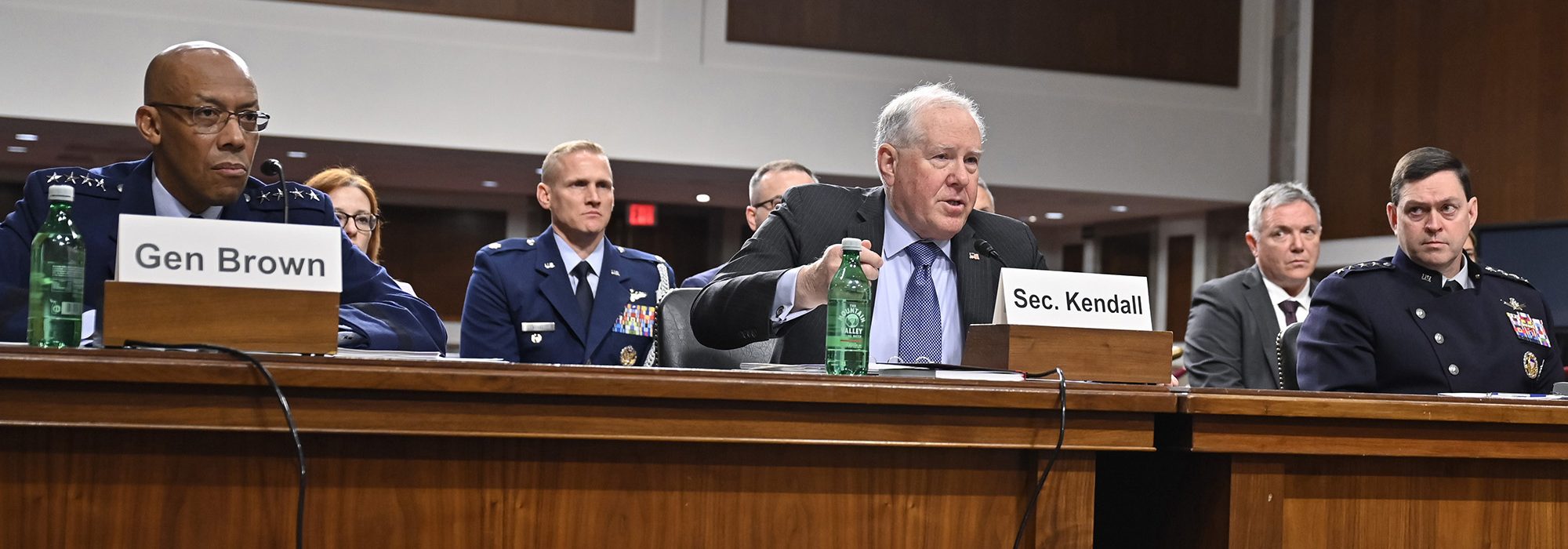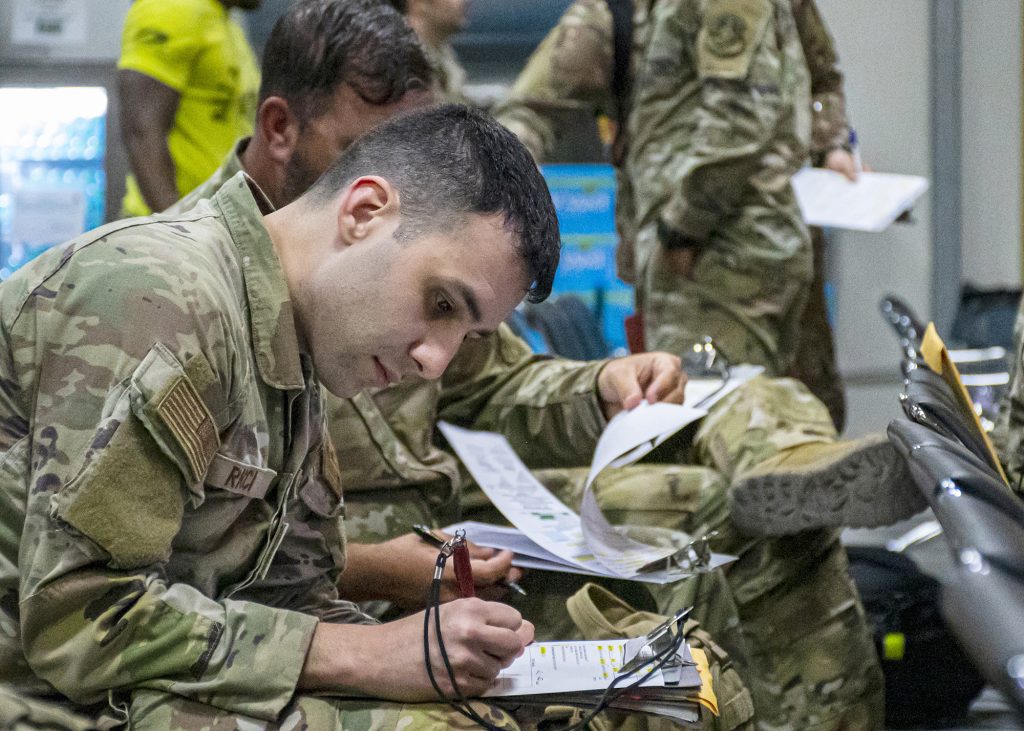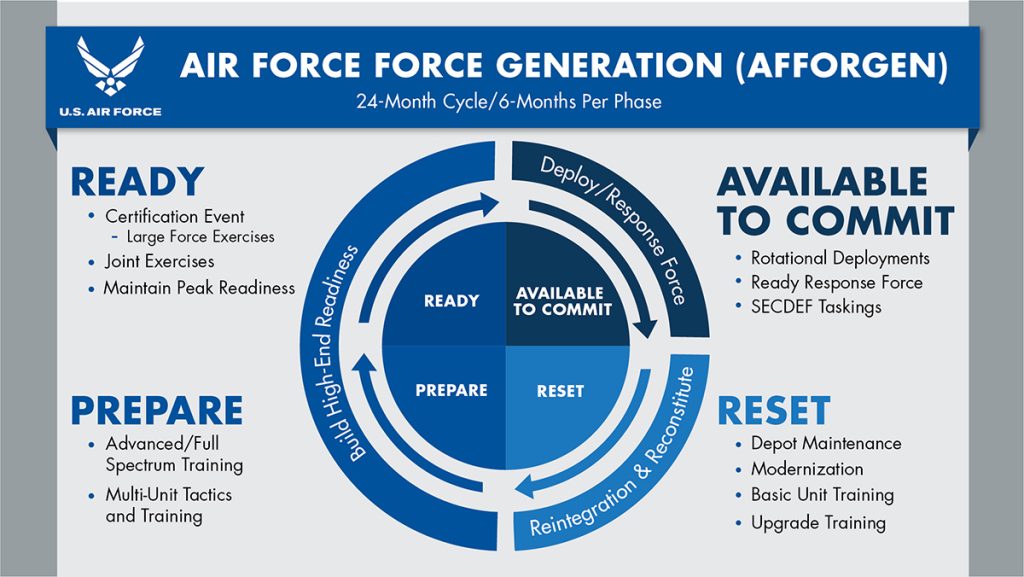Why Congress Told USAF to Spell Out Its Force Design for 2050
By Greg Hadley
Congress directed the Air Force and Space Force to define their future force. The call to action, included in the 2024 National Defense Authorization Act, aims to force the services to articulate a long-term vision and the requirements to support that vision—critical insight that could lead to increased funding.
Rep. Don Bacon (R-Neb.), a retired Air Force brigadier general and ISR pilot, introduced the 2050 force design study legislation to make the Pentagon commit to a flight path from today’s USAF—which he fears is retiring too many aircraft too quickly—to tomorrow’s, which must be capable of deterring and, if necessary, defeating China’s People’s Liberation Army Air Force.
“We want the U.S. Air Force to lay out, ‘OK, this is our plan, and this is what we need,’” Bacon told Air & Space Forces Magazine. “And then we should stand back and say, is this adequate? Do we need to provide the Air Force more top line money for acquisition?”
The force design study, due by Aug. 31, will give Air Force Secretary Frank Kendall, Air Force Chief of Staff Gen. David W. Allvin, and Chief of Space Operations Gen. B. Chance Saltzman a chance to offer more concrete visions for the future Air Force and Space Force.
The Air Force has for years retired more aircraft than it has procured—Bacon pegged the ratio at around 2.5-to-1. Retired service leaders and observers have frequently noted that the fleet is growing smaller, older, and less ready over time, just as the Pentagon pivots to great power competition with the likes of China and Russia.
“It bothers me,” said Bacon, a member of the House Armed Services Committee and its Tactical Air and Land Forces subcommittee. “While we’re trying to gear up for China, you’ve still got Russia, you’ve got to deter in the Middle East, having a 1-to-2.5 ratio means our force is continuing to get smaller.”
Service officials say divestments are necessary to free up funding for modernization, and that the aircraft being retired would not survive in a near-peer fight anyway.
But while Bacon said he is comfortable retiring older, less advanced aircraft like the A-10, he believes USAF must be “the preeminent fighting force in the decades to come, especially with China.” Therefore, it needs to grow, not shrink.
“We’re going to have the B-21, we’re going to have other long-range strike capabilities,” Bacon said. “We’re going to have a lot of the stealth capabilities. You got the nuclear deterrence end of it, we have two-thirds of the triad and because of that, we’ve got to have the strength.”
In the competition for resources, however, the Air Force continues to lag behind the Army and Navy in terms of its direct share of Pentagon resources. Bacon sees the study as crucial to help articulate the need for spending increases.
“I want to be able to force the Air Force to say, ‘This is what we want to look like,’” Bacon said. “I also think we need to discuss, is the top line sufficient for the Air Force? I’m of the opinion it’s not.”
It’s a chance some former officers have told Air & Space Forces Magazine that Kendall welcomes, as it would allow him to explain the reasoning behind key decisions like retiring aircraft, re-optimizing the organizational structure, and adjusting personnel.
Indeed, Bacon said he expects the 2050 study to dovetail with other strategic projects now underway, including Kendall’s push to “re-optimize” forces and the department to better align to modern-day requirements in competition with China.
The force design plan should offer an overarching vision that lawmakers and service leaders can compare to the department’s budget and investment decisions, Bacon said. That will contrast with recent history, he said, where “every year, they have a little bit of a different plan, so we feel like it’s a little bit of a moving target.”
“We want to get them on record: ‘This is what we want to have with a reasonable budget,’” Bacon added.
VCSAF Slife: New Force Generation Model Better Explains ‘Capacity, Risk, and Readiness’
By Chris Gordon
As the Air Force plans to unveil sweeping changes to its structure, organization, and training to “re-optimize” for competition with China, one part of the service’s overhaul is already underway: a new force generation model for how to deploy Airmen.
Known as AFFORGEN, the new force generation model is designed to help the Air Force, combatant commanders, and the broader U.S. military better understand how to deploy Airmen and Air Force assets, part of an effort first outlined in 2021.
“It gives us a better ability to articulate capacity, risk, and readiness to the joint force,” Vice Chief of Staff of the Air Force Gen. James C. “Jim” Slife told Air & Space Forces Magazine in an interview shortly before his elevation to the USAF’s No. 2 job.
Primarily driven by the need for airpower for America’s fights in the Middle East, the Air Force has deployed Airmen from a myriad of bases to large, fixed sites, such as Al Udeid Air Base in Qatar. Service officials say this “crowdsourcing” model will not be applicable to a future fight as the Pentagon pivots toward its long-term focus: China and the Pacific. Instead, a more cohesive plan is required in the future.
“In a relatively low-threat environment, where we’re operating for years at a time out of large main operating bases, that model has been sufficient to our needs,” Slife said. “We organized our Air Force to be as flexible as possible, break it up into as many small little things as we can, and deploy. We’re in a different strategic environment now.”
The Air Force and all military services train and equip forces that deploy at the direction of the Secretary of Defense. Commanders want forces, while the services emphasize the need to maintain long-term readiness.
“That’s the tension the Secretary of Defense has to deal with every single day,” Slife explained. “There’s an insatiable demand from combatant commands. There’s a limited capacity from the services.”
To balance this tension, AFFORGEN establishes a two-year cycle for deployable units. There are four six-month phases, which take the units from “reset,” to train to maintain readiness to deploy before returning to reset.
“The service has a responsibility to think on a different time horizon than combatant commands do,” Slife said. AFFORGEN will help explain that balance better to senior Pentagon leaders, he said.
AFFORGEN is being put to the test in the Middle East as tensions soar in response to attacks by Iran-backed militias on U.S. troops in Iraq and Syria, and on commercial shipping. Airmen were deployed to U.S. Central Command this fall under the AFFORGEN model, according to the Air Force. Secretary of the Air Force Frank Kendall visited those Airmen and Guardians in December to get a firsthand look at how the process works in action.
“As I got to know the Air Force and the Space Force more intimately, it became more apparent to me that we need to make some changes,” Kendall told Airmen and Guardians at an all-call meeting at one base in the Middle East, according to a news release.
AFFORGEN is still being adjusted and service officials have indicated it will not be a one-size-fits-all approach. Units in commands such as Air Mobility Command, Air Force Global Strike Command, and Air Combat Command likely will not deploy in the same way as those at the regional commands, U.S. Air Forces in Europe-Air Forces Africa (USAFE-AFA) or Pacific Air Forces (PACAF).
AFFORGEN will also be complemented by new Air Task Forces (ATFs), which will provide a package of forces that train, deploy, and fight together.
For now, the service plans three Air Task Forces: two for U.S. Central Command and one for U.S. Indo-Pacific Command. The first ATFs are scheduled to begin their AFFORGEN cycle this summer, the Air Force says.
Through these changes, the Air Force is aiming for a greater understanding of the long-term risks and benefits of deployments. But Airmen will still be ready if called upon.
“The Secretary of Defense gives us orders, and we execute those orders,” Slife said.
New F-15EX Fighters Arrive, Testing Accelerates
By John A. Tirpak
Two Boeing F-15EX Eagle IIs arrived at Eglin Air Force Base, Fla., for testing late last year, the third and fourth in a program expected to encompass a planned 104 jets. To hold the program schedule, six more EXs must be delivered between by July.
Dubbed EX3 and EX4, the two newest jets arrived at Eglin on Dec. 20. EX1, EX2, and EX4 belong to the 53rd Wing, while EX3 belongs to the 96th Test Wing. The first EX was delivered to Eglin in 2021. To compress the schedule, developmental and operational testing will take place simultaneously. Flight test data acquired from similar aircraft sold under the Foreign Military Sales program has also been incorporated into the combined test effort.
The two newest jets and the next two to arrive are earmarked for flight testing. The last two in the initial order will be operational aircraft assigned to the Oregon Air National Guard, which runs the Air Force’s F-15 schoolhouse.
Aircraft Nos. 3 and 4 are about a year late, a situation Boeing has chalked up to supply line problems, manufacturing mistakes, and delays stemming from shifting some production work from South Korea to the U.S. The last four aircraft of the first lot are expected by the spring.
The F-15EX missed its objective initial operational capability (IOC) date last July but can still meet the minimum-required IOC deadline if the Air Force receives eight aircraft by July 2024; failure to do so would put the program in breach of the Nunn-McCurdy Act and require certifications from the Secretary of Defense to continue. Full operational capability requires 44 jets on duty, including trained pilots, spares, and support gear; that is now expected in 2027.
At $94 million per fighter, assuming the Air Force buys the planned 104 aircraft, the F-15EX and its Eagle Passive/Active Warning Survivability System (EPAWSS) jamming and electronic warfare suite was deemed the quickest way to replace worn-out F-15Cs. The F-15C fleet averages 38 years old. Severe structural fatigue, deteriorating wiring, and parts obsolescence are persistent problems, and the Air Force restricts speed, load, and maneuvering to minimize risk. The oldest USAF F-15C has been in service since 1979.
The EX is a modern variant based on the F-15QA developed for Qatar. It features fly-by-wire technology and a powerful new processor, along with two additional weapon stations, giving the Eagle II the largest combat load in the Air Force’s fighter inventory.
Like the E model, the EX has two seats, but the Air Force plans to operate it as a single-seat aircraft. The EX is also supposed to be equipped with conformal fuel tanks (CFTs), like the F-15E. The CFTs also have weapon stations, and besides extending range, offer more air-to-ground weapon hardpoints. However, the service did not fund the CFTs for the first 50 or so EX models. Unlike the initial two jets, the new aircraft have cockpit pressure monitors and a warning system, along with a high frequency antenna for satellite communications. They also “feature a forward fuselage redesigned specifically for the U.S. Air Force,” a service release said.
The Air Force said the 2023 annual report from the Pentagon’s director of operational test “stated that the F-15EX is operationally effective, suitable, and survivable against threats likely to be encountered while performing its missions in threat environments.” It added that this report “allows the program to move into a new testing phase.”
The F-15EX has “met every challenge we’ve thrown at it,” and is “on the cusp of being ready for the warfighter,” according to Lt. Col. Christopher Wee, Operational Flight Program Combined Test Force commander.
The new deliveries pave the way “for not only the delivery of combat-coded aircraft to the U.S. Air Force, but also the continued development” of the aircraft, he said.
The Air Force plans to buy 24 F-15EX in fiscal year 2025. Negotiations between Boeing and the Air Force on prices for production lots 2-4 were underway in the fall. The company has considered production rates between 24 and 48 aircraft per year at its St. Louis facilities. Boeing has identified Indonesia as a possible EX customer, with an interest in buying 24 of the fighters.



